Science & Technology
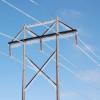 Millions of residents lost heat and power as energy grids failed when sub-zero temperatures and snowfall swept across Texas. Energy grid experts Kyri Baker and Bri-Mathias Hodge discuss how this happened and how to prevent future disasters.
Millions of residents lost heat and power as energy grids failed when sub-zero temperatures and snowfall swept across Texas. Energy grid experts Kyri Baker and Bri-Mathias Hodge discuss how this happened and how to prevent future disasters. Department of Media Studies Scholar-in-Residence Hunter Vaughan, along with an international team, is working to track and help decarbonize the subsea cable network.
Department of Media Studies Scholar-in-Residence Hunter Vaughan, along with an international team, is working to track and help decarbonize the subsea cable network.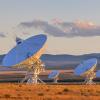 CU Boulder may soon be part of large-scale research into the electromagnetic spectrum that could define wireless innovation across everyday life for the next generation.
CU Boulder may soon be part of large-scale research into the electromagnetic spectrum that could define wireless innovation across everyday life for the next generation.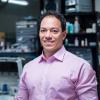 A swallowable, remote-controlled robot that roams around inside a person’s intestines, using tools to perform procedures and sending back a live video stream of this funky pink environment? Now that’s some seriously cool science.
A swallowable, remote-controlled robot that roams around inside a person’s intestines, using tools to perform procedures and sending back a live video stream of this funky pink environment? Now that’s some seriously cool science.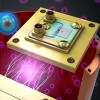 Researchers from JILA, Yale University and the University of California, Berkeley, have used an innovative technique called "quantum squeezing" to dramatically speed up the search for one candidate for dark matter in the lab.
Researchers from JILA, Yale University and the University of California, Berkeley, have used an innovative technique called "quantum squeezing" to dramatically speed up the search for one candidate for dark matter in the lab.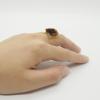 A team of engineers has developed a new device that you can wear like a ring or bracelet and that harvests energy from your own body heat.
A team of engineers has developed a new device that you can wear like a ring or bracelet and that harvests energy from your own body heat.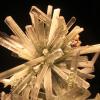 New kinds of liquid crystals developed at CU Boulder resemble gypsum or lazulite crystals—except they flow like fluids.
New kinds of liquid crystals developed at CU Boulder resemble gypsum or lazulite crystals—except they flow like fluids.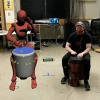 Long before the pandemic sent people scrambling into isolation, musicians longed to jam virtually with others across the globe. But online jamming isn’t feasible because of latency, the tiny delay that occurs when data travels from one point to the next.
Long before the pandemic sent people scrambling into isolation, musicians longed to jam virtually with others across the globe. But online jamming isn’t feasible because of latency, the tiny delay that occurs when data travels from one point to the next.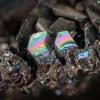 A CU Boulder philosopher and planetary scientists at the Carnegie Institution for Science argue that the existing system of mineral classification fails to account for mineral evolution.
A CU Boulder philosopher and planetary scientists at the Carnegie Institution for Science argue that the existing system of mineral classification fails to account for mineral evolution.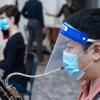 From diving Neanderthals to saliva-based COVID-19 tests, we remember the year in research at CU Boulder.
From diving Neanderthals to saliva-based COVID-19 tests, we remember the year in research at CU Boulder.


